ChatGPT:White villages, or “pueblos blancos,” are picturesque towns typically found in the Andalusian region of southern Spain. These villages are renowned for their whitewashed houses, which are often adorned with colorful flower pots, and their narrow, winding streets. The whitewashing tradition helps to keep the buildings cool during the hot summers. Some of the most famous white villages include Ronda, with its dramatic cliff-side setting, and Mijas, known for its charming squares and panoramic views. These villages offer a glimpse into traditional Spanish architecture and a slower, more relaxed way of life.
Besides the whitewashing tradition, white villages in Spain have several other major characteristics:
- Narrow, Winding Streets: These villages often feature labyrinthine streets that are narrow and winding, designed to provide shade and maximize the cooling effect during hot summer days. This layout also reflects their medieval origins.
- Flower-Adorned Balconies and Patios: Residents take great pride in decorating their homes with colorful flowers, especially geraniums, which are often displayed in ceramic pots on balconies, patios, and walls. This creates a vibrant contrast to the whitewashed walls.
- Historical Architecture: Many white villages boast significant historical and architectural landmarks, such as ancient churches, castles, and Moorish fortresses. The architecture often blends Roman, Moorish, and Christian influences.
- Cultural Festivals: These villages are known for their rich cultural traditions and festivals, such as Semana Santa (Holy Week), local fairs (ferias), and Romerías (pilgrimages). These events often feature traditional music, dance, and costumes.
- Picturesque Plazas: Central plazas serve as social hubs where locals gather. These plazas are often surrounded by important buildings like the town hall, church, and local shops, and are typically adorned with fountains and benches.
- Artisan Crafts: Many white villages are known for their artisanal crafts, such as pottery, ceramics, leather goods, and woven textiles. Local markets often showcase these handmade items, reflecting the traditional skills passed down through generations.
- Natural Scenery: These villages are frequently set in stunning natural surroundings, such as mountainous regions, rolling hills, and lush valleys. This scenic beauty adds to their charm and offers opportunities for outdoor activities like hiking and exploring.
- Culinary Traditions: The local cuisine is another highlight, often featuring regional dishes made with fresh, locally sourced ingredients. Traditional Andalusian dishes, such as tapas, gazpacho, and locally produced olive oil, are common.
These characteristics contribute to the unique charm and appeal of the white villages, making them popular destinations for tourists seeking an authentic Andalusian experience.
Here are ten of the most well-known white villages in Spain:
- Ronda – Famous for its dramatic cliffside location and historic bridge, Puente Nuevo.
- Mijas – Known for its charming streets, donkey taxis, and panoramic views of the Mediterranean.
- Arcos de la Frontera – Perched on a sandstone ridge, offering spectacular views and a rich history.
- Setenil de las Bodegas – Unique for its houses built into and under large rock overhangs.
- Frigiliana – Renowned for its well-preserved Moorish architecture and narrow, winding streets.
- Grazalema – Situated in a lush natural park, known for its beautiful landscapes and traditional crafts.
- Vejer de la Frontera – A hilltop village with a labyrinth of cobbled streets and historic buildings.
- Casares – Offers stunning views of the surrounding countryside and the Mediterranean Sea.
- Zuheros – Notable for its scenic setting in the Sierra Subbética Natural Park and a medieval castle.
- Mojácar – Combines a picturesque old town with stunning coastal views, located near the Mediterranean.
****Describe the history and development of Ronda and Mijas.
Ronda
History and Development:
• Ancient Origins: Ronda’s history dates back to prehistoric times, with evidence of early human settlements. The area was later inhabited by the Celts, Phoenicians, and Romans. The Romans built a fortified town called Acinipo near present-day Ronda.
• Moorish Influence: During the 8th century, Ronda was conquered by the Moors, who significantly influenced the town’s architecture and culture. They built the original fortifications and the Old Bridge (Puente Viejo), which connected the two parts of the town across the deep El Tajo gorge.
• Christian Reconquest: In 1485, Ronda was reconquered by the Catholic Monarchs, Ferdinand and Isabella. The town saw significant changes, with many Moorish buildings converted or replaced by Christian structures. The construction of the New Bridge (Puente Nuevo) in the 18th century was a major development, providing a dramatic connection across the gorge and becoming an iconic symbol of Ronda.
• Modern Era: Ronda developed as a cultural and tourist destination in the 19th and 20th centuries. The town’s historic sites, such as the bullring (Plaza de Toros) and various palaces, along with its stunning natural scenery, have made it a popular destination for travelers.
Interesting Attractions in Ronda
1. Puente Nuevo (New Bridge): A breathtaking bridge spanning the El Tajo gorge, offering stunning views of the surrounding landscape.
2. Plaza de Toros: One of the oldest bullrings in Spain, known for its historic significance and architectural beauty.
3. Palacio de Mondragón: A palace with Moorish architecture, now housing the Municipal Museum of Ronda, showcasing local history and artifacts.
4. Arab Baths (Baños Arabes): Well-preserved Moorish baths dating back to the 13th century, providing insight into the town’s Islamic past.
5. La Casa del Rey Moro (House of the Moorish King): A historic palace featuring gardens and a secret water mine descending into the gorge.
6. Old Town (La Ciudad): The historic quarter of Ronda, with narrow streets, charming squares, and historic buildings.
7. Ronda Museum: Located in the Church of St. John the Baptist, displaying a variety of artifacts from different historical periods.
8. Alameda del Tajo: A beautiful park with walkways, gardens, and viewpoints overlooking the gorge and countryside.
9. Iglesia de Santa María la Mayor: A significant church built on the site of a former mosque, blending Gothic and Renaissance architectural styles.
10. Cuenca Gardens (Jardines de Cuenca): Terraced gardens along the cliffside, providing panoramic views and a peaceful setting.
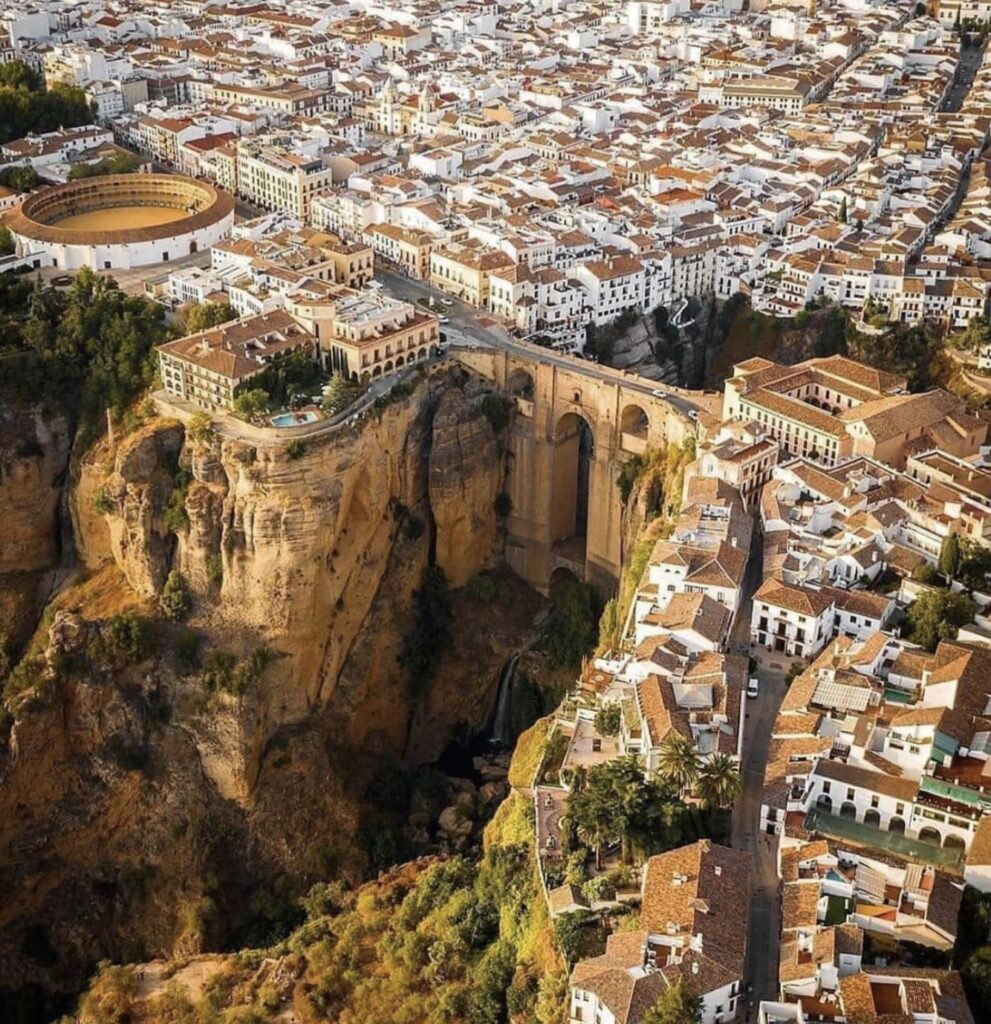
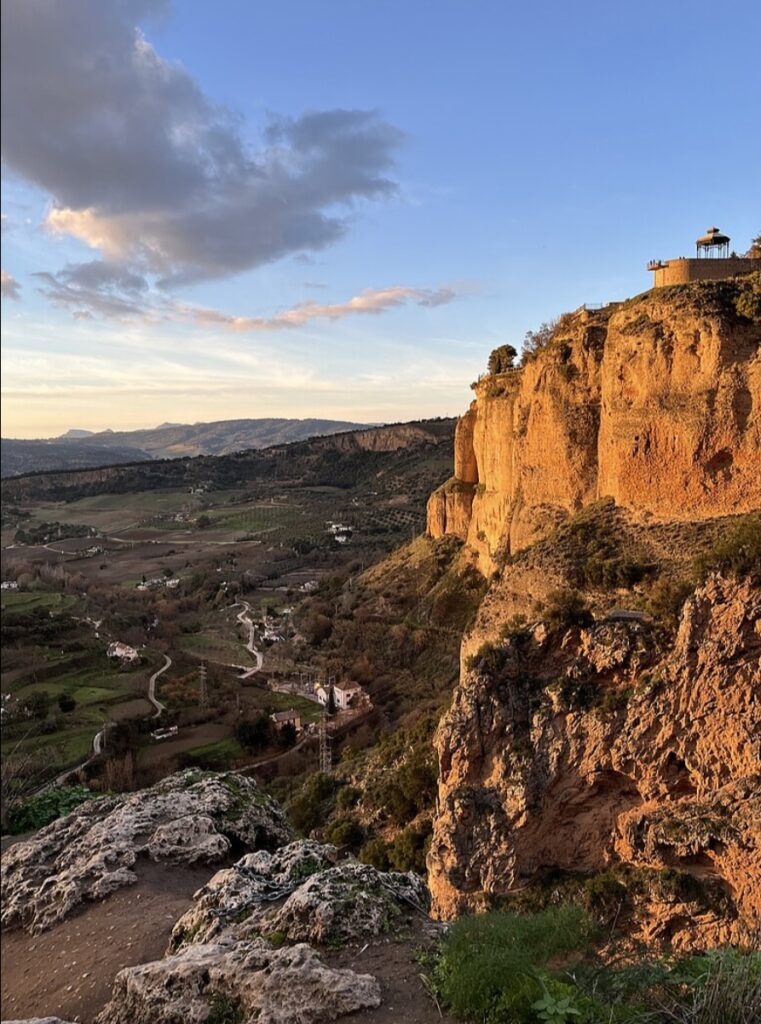
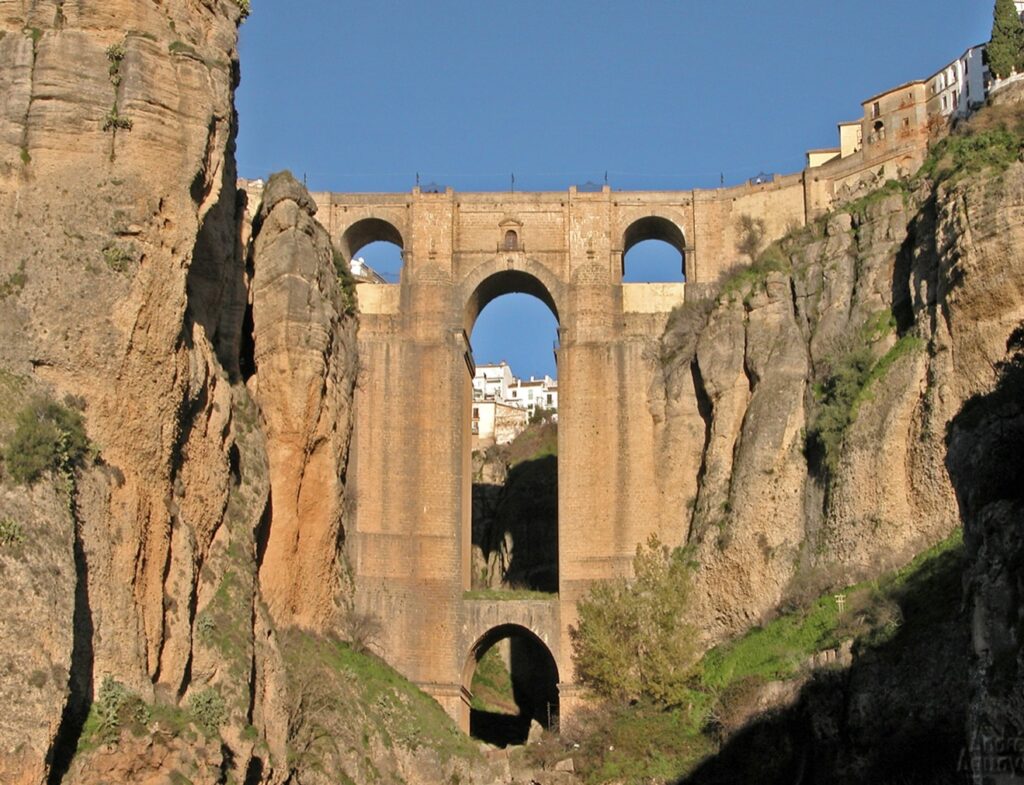
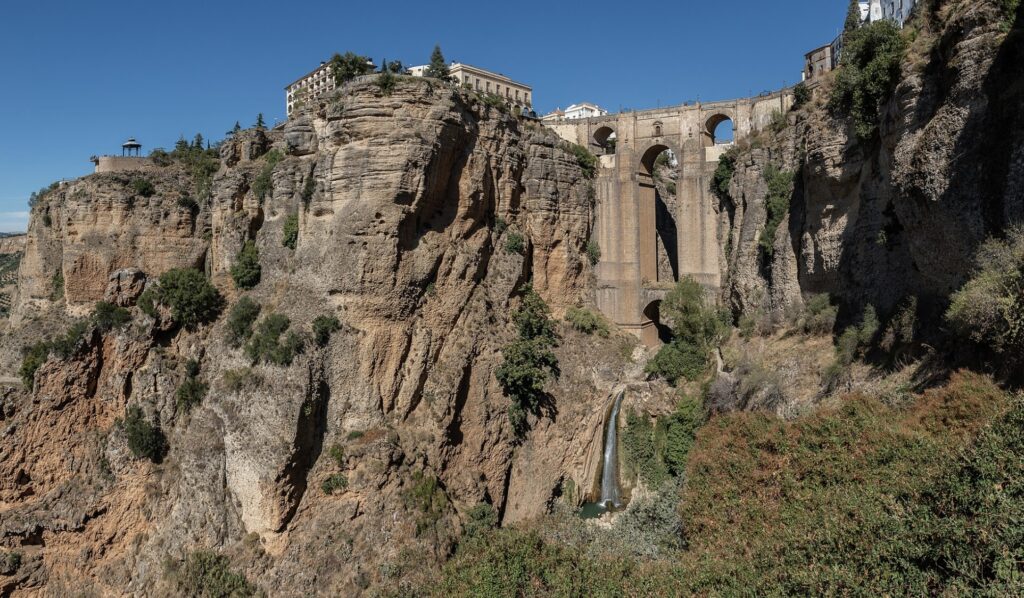
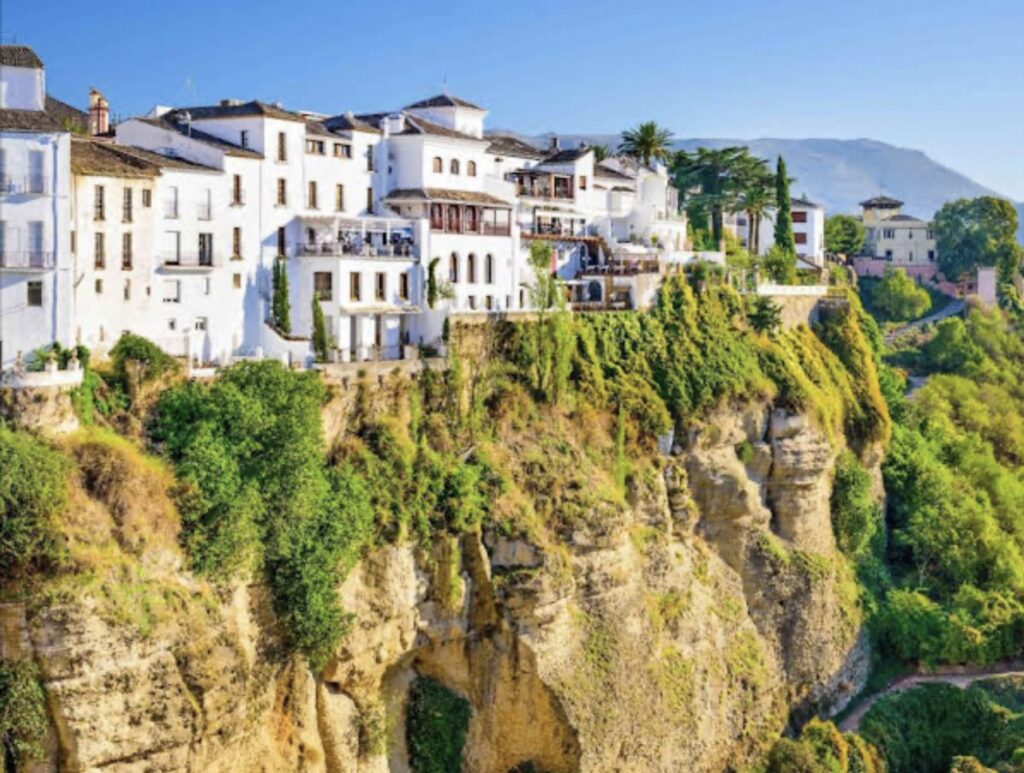
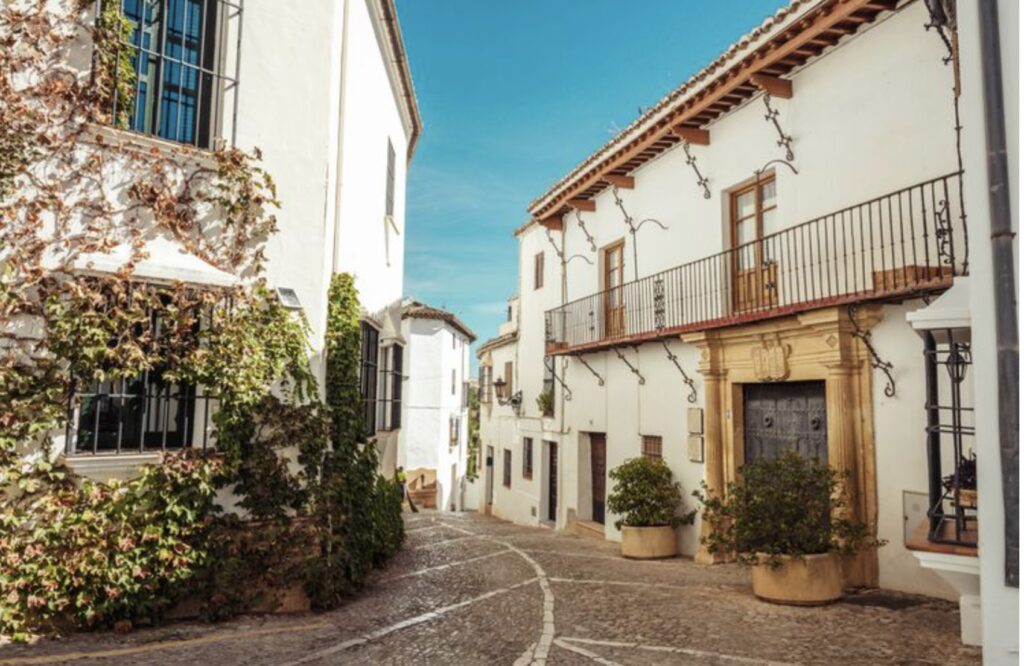
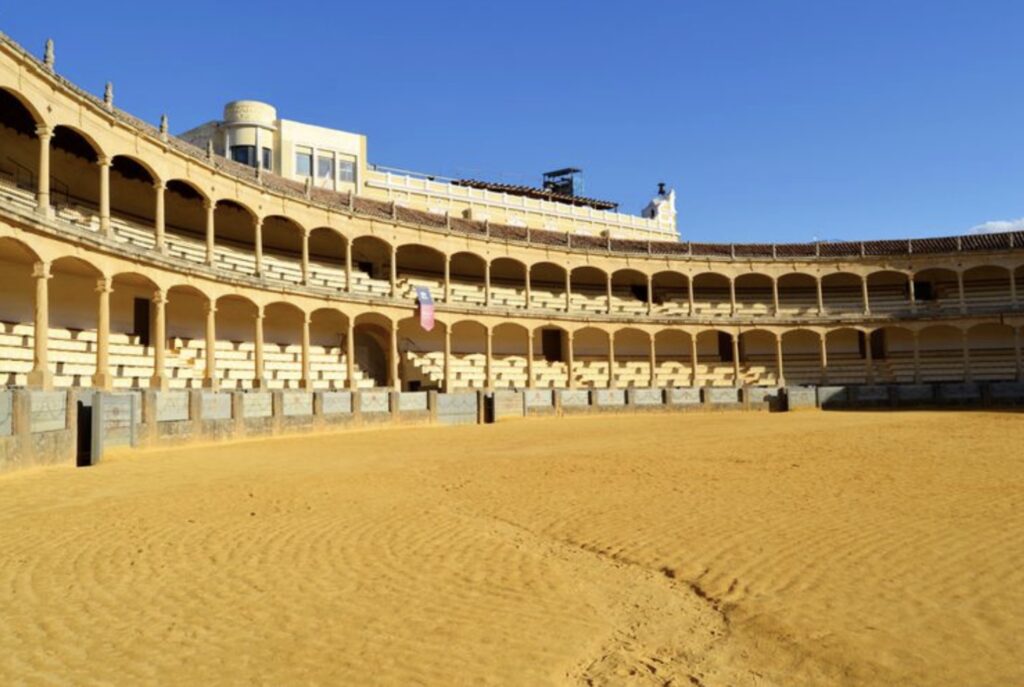
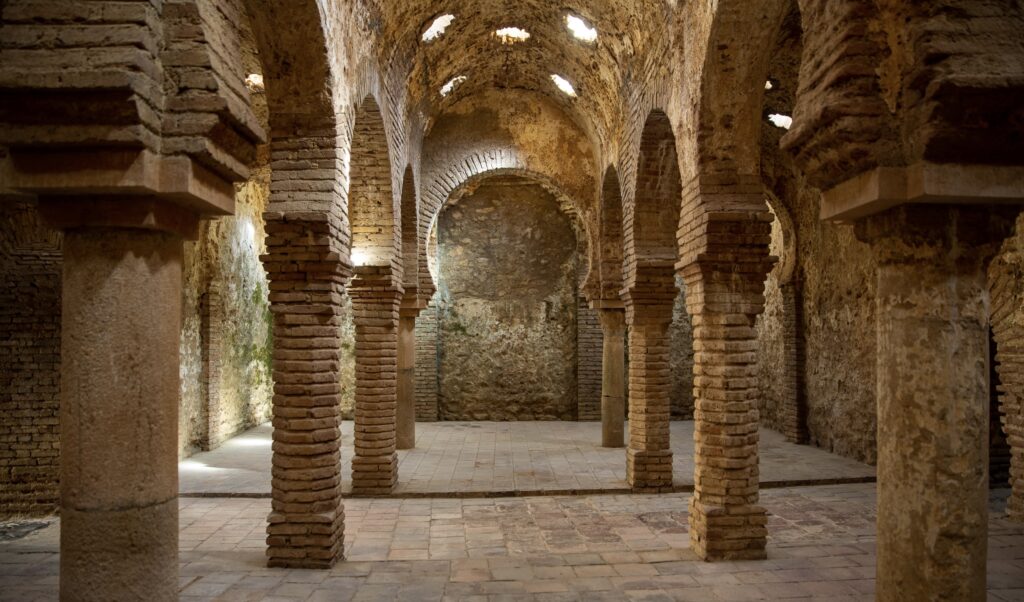
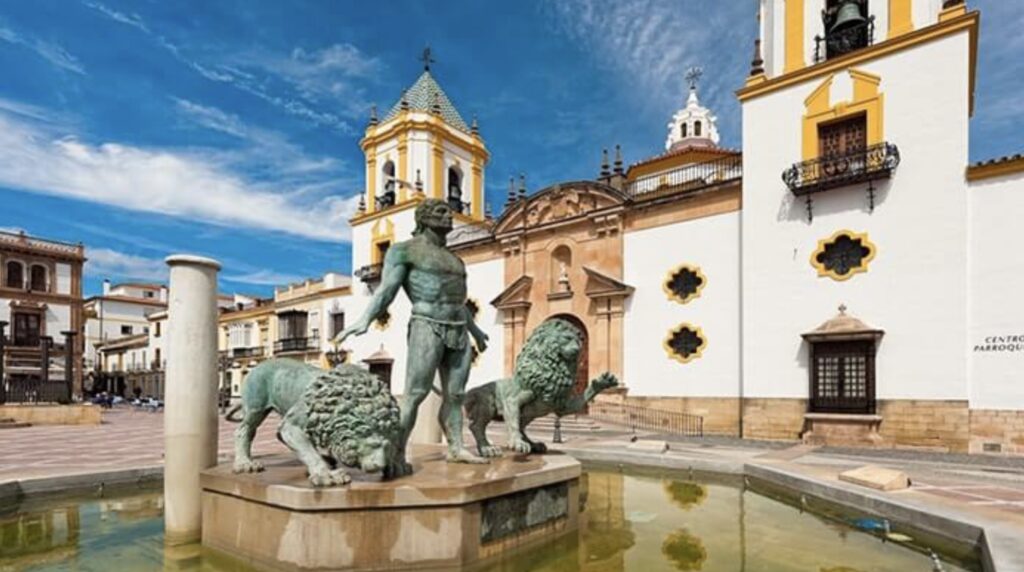
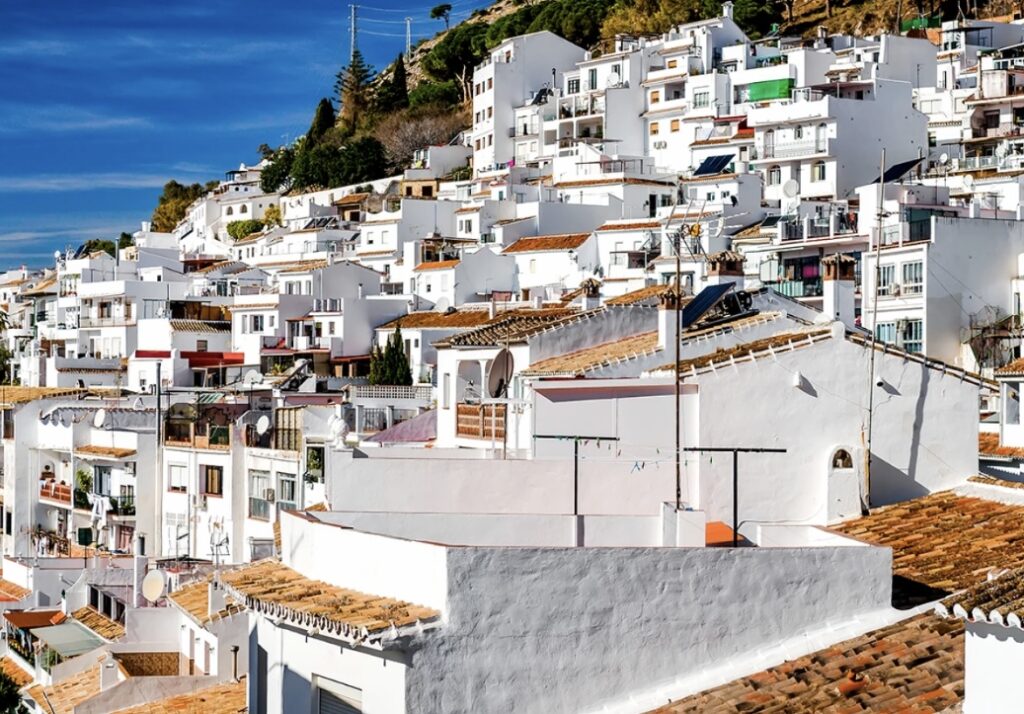
Mijas
History and Development:
• Ancient Beginnings: Mijas has been inhabited since ancient times, with evidence of early settlements by the Tartessians and later by the Phoenicians and Greeks. The Romans established the town as Tamisa, which was a part of the Roman province of Hispania.
• Moorish Period: The Moors conquered Mijas in the 8th century, integrating it into the kingdom of Al-Andalus. The town, then known as Mixa, thrived under Moorish rule, developing agriculture, particularly the cultivation of grapes and olives. The Moorish influence is still evident in the town’s layout and architecture.
• Reconquest and Christian Rule: Mijas was recaptured by Christian forces in the late 15th century. The town faced significant changes, with the construction of new religious and civic buildings. The introduction of new agricultural practices and crops helped the town to prosper.
• 19th and 20th Century Development: In the 19th century, Mijas experienced a decline due to political instability and economic challenges. However, the 20th century brought new opportunities with the growth of tourism. Mijas adapted by preserving its traditional charm while developing infrastructure to accommodate visitors.
• Tourism Boom: Today, Mijas is known for its blend of traditional Andalusian architecture and modern tourist amenities. The town is famous for its whitewashed buildings, narrow streets, and beautiful plazas. It also offers unique attractions like the donkey taxis and the Mijas Wine Museum, contributing to its popularity as a tourist destination.
Interesting Attractions in Mijas
1. Mijas Pueblo: The historic center of Mijas, with its narrow streets, whitewashed houses, and traditional charm.
2. Ermita de la Virgen de la Peña: A chapel carved into a rock, dedicated to the patron saint of Mijas, offering beautiful views.
3. Mijas Bullring: An oval-shaped bullring, unique for its design and location, providing a glimpse into local traditions.
4. Mijas Wine Museum: A museum showcasing the history and production of wine in the region, with tastings available.
5. Plaza de la Constitución: A central square with cafes, shops, and a lively atmosphere, often the site of local events and markets.
6. Donkey Taxis: A unique and traditional mode of transport in Mijas, offering rides through the village.
7. Mijas Aqueduct (Los Arcos): A historic aqueduct from the Moorish period, showcasing ancient engineering.
8. Contemporary Art Center (CAC Mijas): A museum featuring modern art exhibitions, including works by Picasso and Dalí.
9. Iglesia de San Sebastián: A charming church with a beautiful interior, located in the heart of Mijas Pueblo.
10. Parque La Muralla: A park with gardens and walkways, offering stunning views of the coast and surrounding countryside.
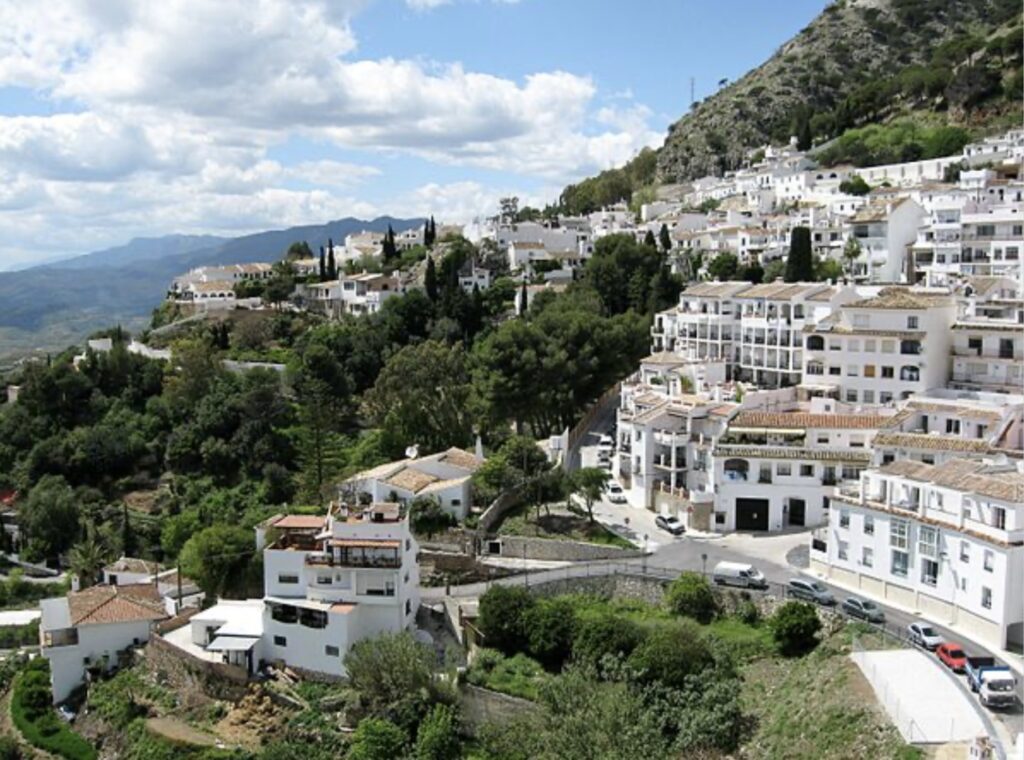
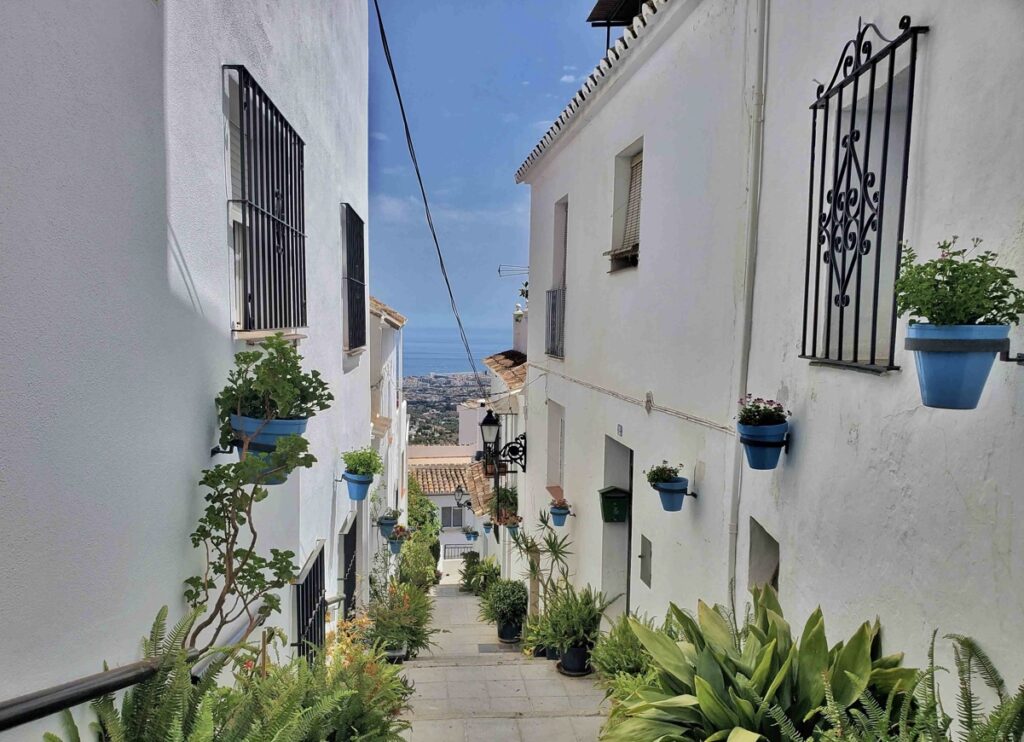
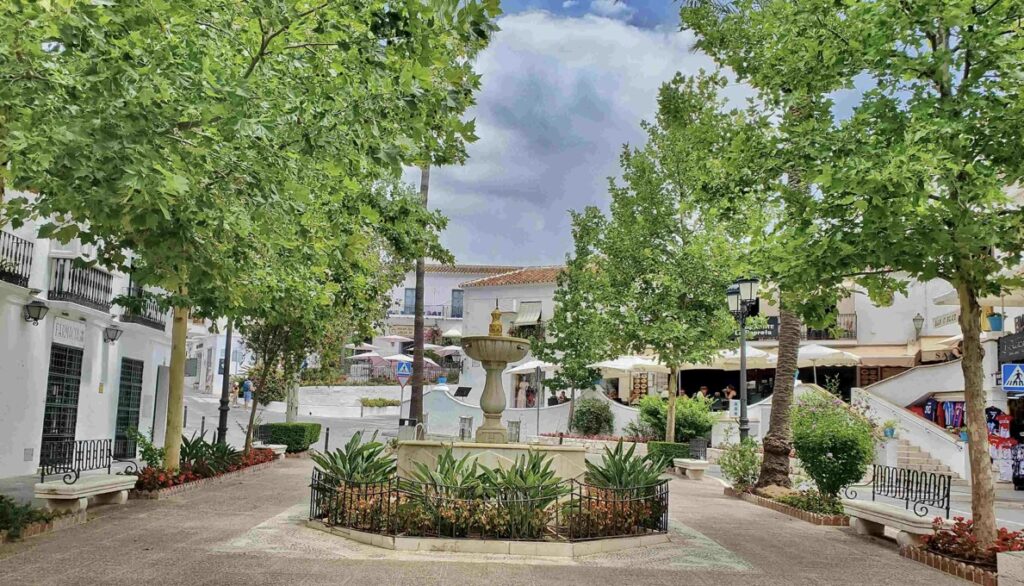
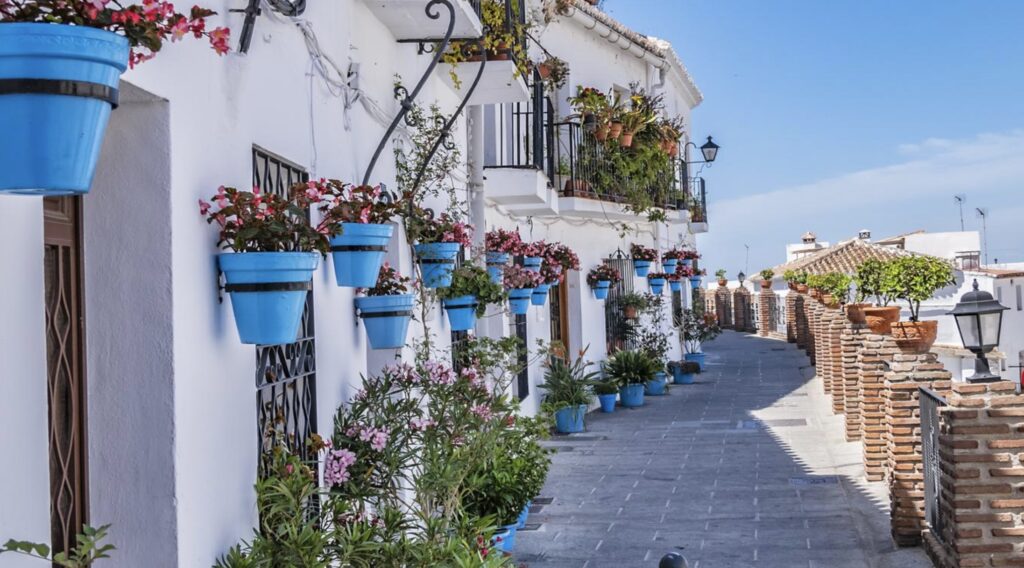
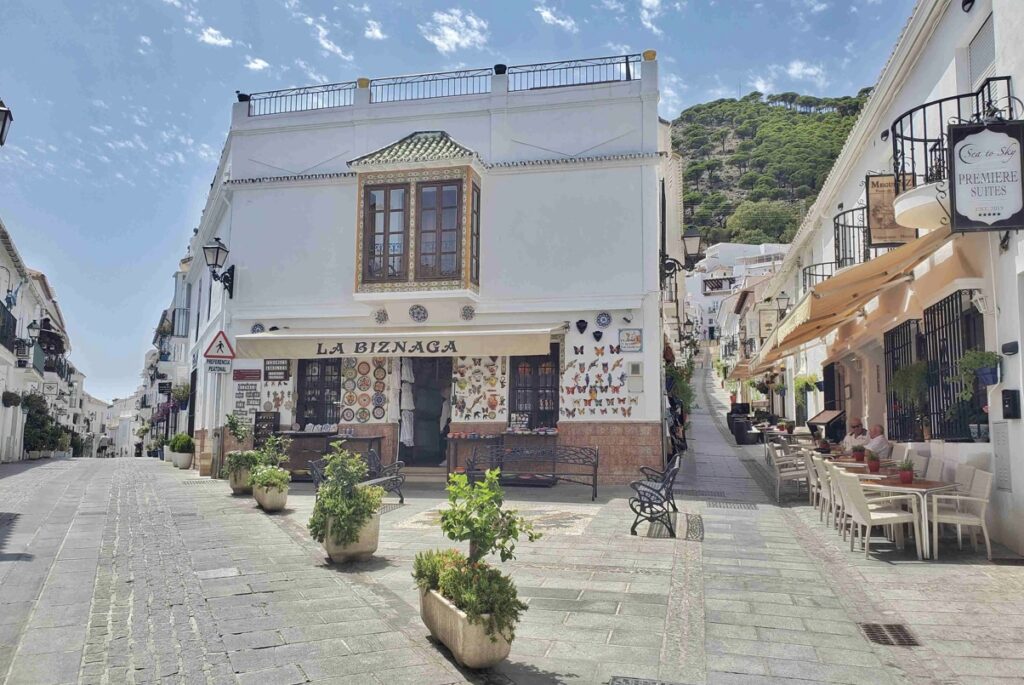
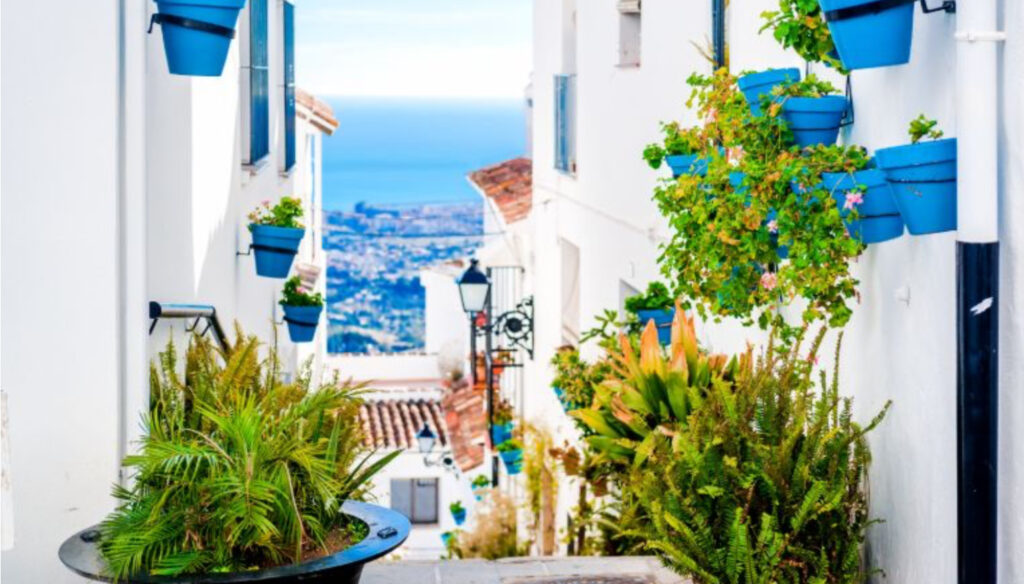
Local Food Specialties in Ronda
- Rabo de Toro (Oxtail Stew): A rich and hearty stew made from oxtail, slow-cooked with vegetables, wine, and spices.
- Serranito: A traditional Andalusian sandwich typically made with grilled pork loin, serrano ham, and green pepper, often served with a fried egg on top.
- Gazpacho: A cold tomato soup made with fresh vegetables, olive oil, and vinegar, perfect for hot days.
- Ajo Blanco: A cold garlic and almond soup, often served with grapes or melon.
- Chorizo al Vino: Chorizo sausage cooked in red wine, a popular tapa.
- Tagarninas: A type of wild thistle, often cooked in stews or scrambled with eggs.
- Queso Payoyo: A local cheese made from goat or sheep milk, known for its creamy texture and strong flavor.
- Puchero: A traditional Andalusian stew made with chickpeas, meat (usually pork), and vegetables.
- Bienmesabe: A dessert made from almonds, sugar, eggs, and cinnamon, often served with ice cream or custard.
- Migas: A dish made from leftover bread crumbs fried with garlic, chorizo, and sometimes topped with fried eggs or grapes.
Local Food Specialties in Mijas
- Salmorejo: A thicker version of gazpacho, made with tomatoes, bread, garlic, and olive oil, often garnished with hard-boiled eggs and serrano ham.
- Sopa de Maimones: A garlic soup made with bread, water, and olive oil, sometimes enriched with eggs or ham.
- Borrachuelos: Sweet pastries typically enjoyed during holidays, flavored with wine and anise, and sometimes filled with sweet fillings like pumpkin or sweet potato.
- Churros: Fried dough pastries often served with hot chocolate for dipping.
- Ensalada Malagueña: A salad made with salt cod, oranges, olives, and potatoes, dressed with olive oil.
- Pestiños: Sweet fritters coated in honey or sugar, traditionally enjoyed during Easter and Christmas.
- Tortas de Aceite: Thin, crispy sweet biscuits flavored with anise and sesame seeds.
- Porra Antequerana: Similar to salmorejo, this is a thick, cold tomato-based soup, often topped with tuna or hard-boiled eggs.
- Plato de los Montes: A hearty dish featuring pork loin, sausages, fried potatoes, peppers, and sometimes eggs.
- Chanfaina: A stew made with lamb or goat, potatoes, and a variety of spices, often served with bread.
